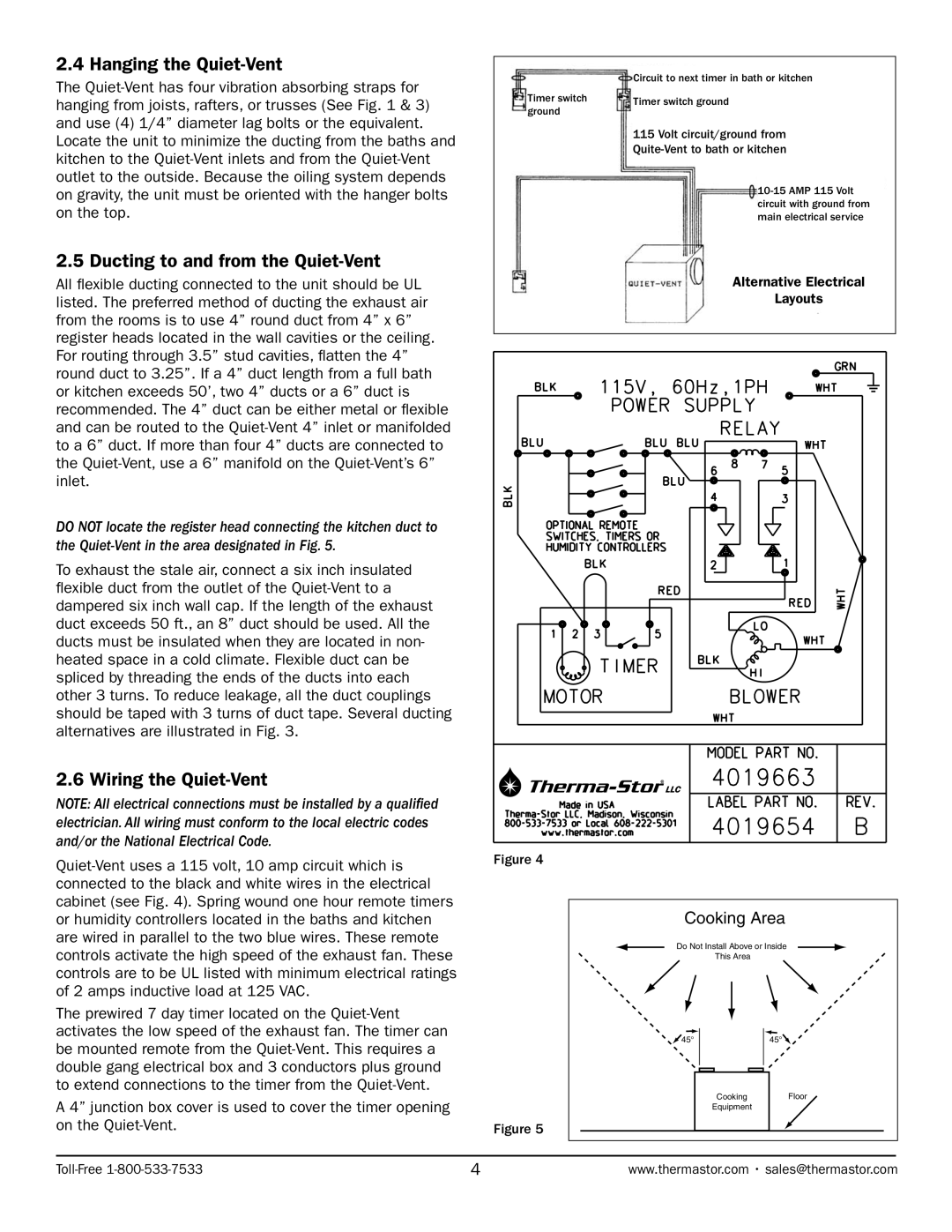Quiet-Vent Ventilation System specifications
The Therma-Stor Products Group Quiet-Vent Ventilation System represents a significant advancement in indoor air quality technology, specifically designed for residential and commercial applications. This innovative system addresses the growing demand for effective ventilation solutions that minimize noise while maximizing performance. With a focus on customer comfort, sustainability, and efficiency, the Quiet-Vent is a standout choice for those seeking to improve their indoor environments.One of the main features of the Quiet-Vent Ventilation System is its whisper-quiet operation. This is achieved through advanced engineering and sound-dampening technologies that significantly reduce the noise associated with typical ventilation systems. Users can enjoy fresh, filtered air without the disruptive sounds that often accompany traditional systems, making it ideal for bedrooms, offices, and shared living spaces.
The system incorporates state-of-the-art filtration technologies that effectively capture airborne pollutants, allergens, and particulates. With high-efficiency particulate air (HEPA) filters, the Quiet-Vent ensures that the air being circulated is clean and healthy. This is particularly beneficial for households with allergy sufferers or those concerned about indoor air quality due to external pollutants.
Another noteworthy characteristic of the Quiet-Vent system is its energy efficiency. The design includes an energy recovery ventilator (ERV), which transfers heat and moisture between incoming and outgoing air streams. This process helps maintain balanced humidity levels while reducing energy consumption, translating into lower utility bills and a reduced environmental footprint.
The Quiet-Vent is also designed with user-friendly controls, making it easy to monitor and adjust settings to suit individual preferences. Optional smart technology integration allows for remote operation and scheduling, providing convenience for modern users who rely on automation and smart home devices.
Durability and reliability are critical components of the Quiet-Vent’s design. Built with high-quality materials, the system is engineered to withstand the test of time, requiring minimal maintenance. This feature ensures peace of mind for homeowners and business operators alike.
In conclusion, the Therma-Stor Products Group Quiet-Vent Ventilation System is a sophisticated solution for anyone looking to enhance their indoor air quality. With its quiet operation, advanced filtration technologies, energy efficiency features, user-friendly controls, and durable construction, it stands out as a top choice for effective ventilation without compromise. This system represents a significant leap forward in creating healthier, more comfortable indoor environments.

